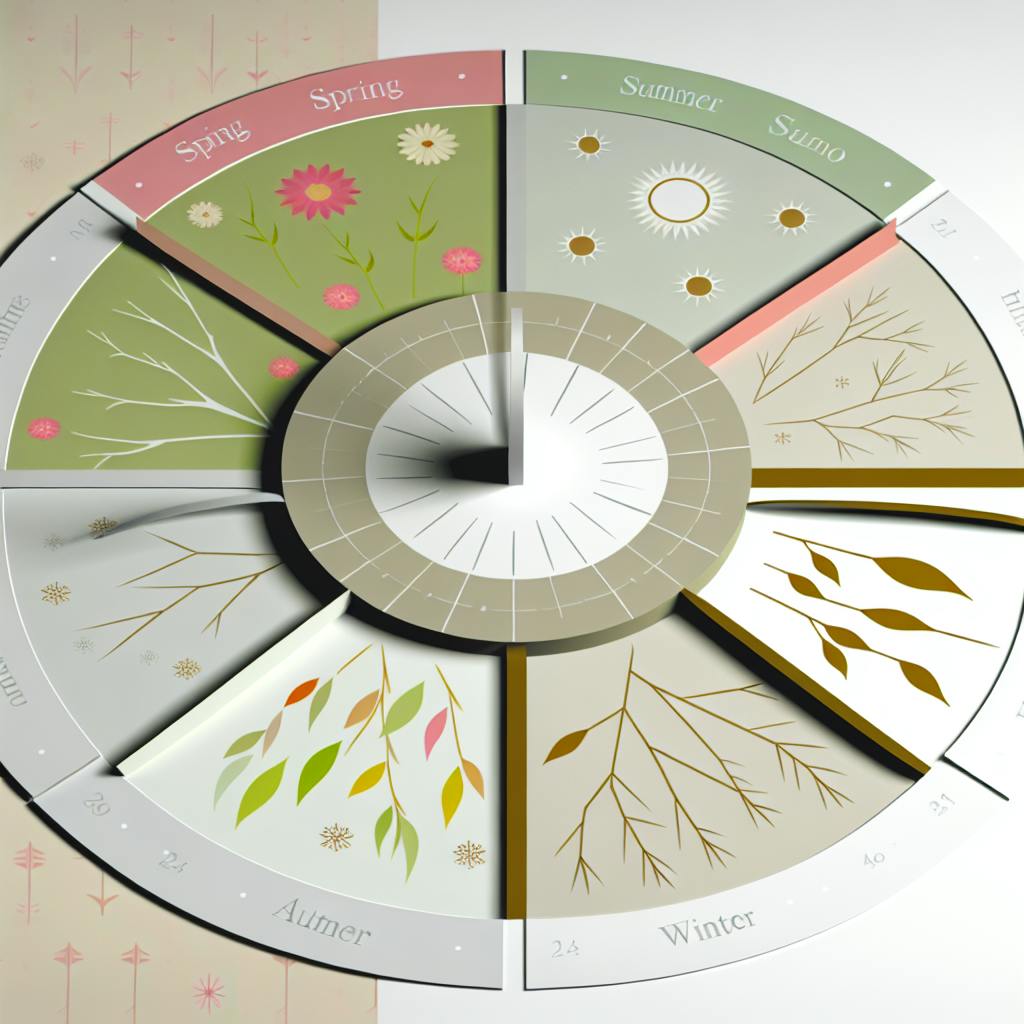Effectively managing relationships with media professionals like journalists, bloggers, and influencers is crucial for increasing brand visibility, establishing industry authority, amplifying messaging, responding to crises, and building long-term beneficial connections. Here are the key strategies:
-
Know Your Media Channels: Identify the traditional and digital media channels your target audience prefers, the content they engage with, the influencers in your industry, and emerging trends.
-
Create Effective Media Pitches: Craft attention-grabbing, personalized pitches that highlight the unique value and newsworthiness of your story. Keep them concise, conversational, and include relevant data.
-
Build Personal Connections: Understand journalists' interests, personalize your outreach, and express gratitude to build trust and strengthen relationships.
-
Provide Valuable Content: Offer unique insights, high-quality content, and timely information to showcase your brand's expertise and establish yourself as a thought leader.
-
Use Multimedia Content: Incorporate visuals like infographics, videos, and high-quality images to engage your audience, simplify complex topics, and create emotional connections.
-
Timing and Follow-Up: Pitch during optimal times (early morning EST) and follow up effectively without becoming a nuisance.
-
Track and Improve: Monitor metrics like website traffic, engagement, public opinion, and market position to refine your strategy and achieve your communication goals.
-
Maintain Relationships: Stay in touch, offer useful information, and be responsive to media professionals' needs to foster long-lasting relationships.
-
Stay Current and Flexible: Keep up with current events and trends, create timely pitches, identify target outlets, and tailor your approach to your audience's needs.
-
Consistency and Persistence: Focus on building trust through consistent and persistent communication, being reliable and responsive, and showing appreciation for coverage.
By following these strategies, you can build positive connections with media professionals, increase visibility for your brand, and achieve your communication goals.
Related video from YouTube
1. Know Your Media Channels
Knowing the media channels your target audience uses is key. This includes:
- Traditional media like newspapers, magazines, TV, and radio
- Digital platforms like websites, online news, blogs, and social media
Ask yourself:
- What media channels does my audience prefer?
- What type of content do they engage with?
- Who are the influencers and thought leaders in my industry?
- What are the emerging media trends and opportunities?
Understanding the media landscape helps you:
| Benefit | Description |
|---|---|
| Increased Reach | Reach a wider audience through the right channels. |
| Industry Expertise | Position yourself as an expert in your field. |
| Media Relationships | Build lasting connections with media professionals. |
| Stay Ahead | Adapt to changes in the media landscape. |
Key Takeaways
- Identify the media channels your audience uses
- Understand the content they engage with
- Know the influencers and thought leaders in your industry
- Stay updated on emerging media trends and opportunities
With this knowledge, you can tailor your messaging and communication strategy to effectively reach and engage your target audience. In the next section, we'll discuss crafting pitches to media professionals.
2. Create Effective Media Pitches
Getting media coverage starts with crafting an effective pitch. A well-written pitch can grab a journalist's attention and increase the chances of your story being covered.
Understand the Journalist's Needs
Journalists receive many pitches daily, so your pitch must stand out. To achieve this, consider the journalist's perspective:
- They have limited time to review pitches
- They seek relevant, timely, and newsworthy stories
- They appreciate clear, concise, and personalized pitches
Key Elements of a Strong Pitch
A strong pitch should include:
- Attention-grabbing subject line: Summarize your pitch in a clear, concise way.
- Personalization: Address the journalist by name and show you've researched their work.
- Context: Explain why your story is newsworthy and timely.
- Unique value: Highlight what makes your story unique and worth covering.
- Call to action: Request an interview or provide additional information.
Tips for Effective Pitching
| Tip | Description |
|---|---|
| Keep it brief | Journalists are busy, so keep your pitch concise. |
| Use a conversational tone | Avoid jargon or overly formal language. |
| Include relevant data | Support your pitch with relevant data or statistics. |
| Follow up | If you don't receive a response, politely follow up. |
3. Build Personal Connections
Building personal connections with media professionals is key. It helps build trust, increases the chances of media coverage, and fosters long-term relationships. Here are some strategies:
Understand the Journalist's Interests
Before reaching out, research the journalist's interests, topics they cover, and recent articles. This helps you tailor your pitch and shows you value their time. Understanding their needs will grab their attention.
Personalize Your Outreach
Personalize emails or pitches by mentioning something you liked about their work or how it relates to your brand. A personal touch can go a long way in establishing a connection. Keep it professional, but show you've taken the time to understand their perspective.
Express Gratitude
Say "thank you" when a journalist covers your story or provides feedback. A simple acknowledgment can help build a positive relationship. It shows you value their time and expertise.
| Strategy | Description |
|---|---|
| Research Interests | Understand the journalist's beats and recent articles to tailor your pitch. |
| Personalize Outreach | Add a personal touch by relating to their work or your brand. |
| Express Gratitude | Thank the journalist for coverage or feedback to build goodwill. |
4. Provide Valuable Content
Offering valuable content is crucial for building trust with media professionals. It showcases your brand's expertise and makes you stand out from others.
Offer Unique Insights
Provide exclusive information, fresh perspectives, or in-depth analysis on topics related to your industry. This could include:
- Sharing proprietary data or research findings
- Offering expert opinions or commentary
- Presenting a new angle on current issues or trends
By offering unique insights, you demonstrate your brand's knowledge and establish yourself as a thought leader.
Focus on Quality
Create high-quality, well-researched, and engaging content that provides value to the reader. Prioritize quality over quantity. A few well-crafted pieces are better than a flood of mediocre content.
Be Relevant and Timely
Keep your content relevant and timely by addressing current industry trends, news, or topics of interest. This will help your brand stay top-of-mind with media professionals and increase the chances of media coverage.
| Strategy | Description |
|---|---|
| Offer Unique Insights | Provide exclusive information, fresh perspectives, or in-depth analysis to showcase your brand's expertise. |
| Focus on Quality | Create high-quality, well-researched, and engaging content that provides value to the reader. |
| Be Relevant and Timely | Address current industry trends, news, or topics of interest to stay relevant and increase media coverage opportunities. |
5. Use Multimedia Content
Using multimedia like images, videos, and graphics can help you tell your story better. These visual elements grab attention and make complex info easier to understand.
Show, Don't Just Tell
Visuals allow you to:
- Engage your audience: Break up text with eye-catching visuals to keep people interested.
- Simplify complex topics: Use infographics or videos to explain data and stats clearly.
- Create an emotional connection: Images and videos evoke feelings that text alone can't.
By adding multimedia to your pitches, you create a memorable experience that stands out.
Effective Multimedia Examples
Here are some visuals that work well:
| Visual | Use |
|---|---|
| Infographics | Present data and stats visually |
| Videos | Tell stories, showcase products, or provide expert insights |
| High-quality images | Highlight products, services, or company events |
Using the right multimedia elements enhances your pitches and helps you connect with media professionals.
sbb-itb-bc761f5
6. Timing and Follow-Up
When and how you send your pitch can impact its success. Here are some tips on timing and following up:
The Best Time to Pitch
| Time | Preference |
|---|---|
| 5 a.m. to 9 a.m. EST | 34% of journalists prefer this window |
| 9 a.m. to 12 p.m. EST | Another 34% prefer this time |
Avoid late afternoon or evening pitches, as they may get buried in inboxes.
Following Up Effectively
Follow-up is crucial, but don't overdo it. Here are some guidelines:
- Wait 2-3 days after the initial pitch before following up
- Send only one follow-up email
- Keep it brief and polite
- Restate your key points
- Offer additional information if needed
- Respond promptly to any requests
The goal is to be persistent without becoming a nuisance. A well-timed follow-up can revive interest in your pitch.
7. Track and Improve
Measuring the success of your media outreach is key to understanding what works and what doesn't. This helps you refine your strategy and make informed decisions. Here are some important metrics to track:
Website Traffic
Monitor the number of visitors to your website, especially after media coverage or press releases. This shows how effective your outreach is in driving traffic.
Engagement
Track social media engagement like likes, shares, comments, and mentions. This reveals how your audience responds to your content and messaging.
Public Opinion
Analyze the tone and sentiment of media coverage to understand public opinion about your brand, products, or services. This helps identify areas for improvement and capitalize on positive sentiment.
Market Position
Measure your brand's share of voice in the media landscape compared to competitors. This shows your market position and opportunities to increase visibility.
By tracking these metrics, you can refine your media outreach strategy, optimize resources, and achieve your communication goals. Regularly review and adjust your metrics to ensure they align with your evolving objectives.
Key Metrics to Track
| Metric | Description |
|---|---|
| Website Traffic | Number of visitors to your website after media coverage |
| Engagement | Social media likes, shares, comments, and mentions |
| Public Opinion | Tone and sentiment of media coverage about your brand |
| Market Position | Your brand's share of voice compared to competitors |
8. Maintain Relationships
Keeping strong bonds with media professionals takes time and effort. It's key to stay in touch, offer useful info, and respond to their needs.
Stay in Touch
Check in with key media contacts often. This can be simple actions like:
- Retweeting their posts
- Commenting on their Facebook posts
- Emailing to say you enjoyed their latest article
- Asking if they have any upcoming stories you can help with
These small gestures build trust and strengthen your relationships.
Offer Useful Info
Give media professionals valuable insights, data, and resources to help with their stories. This can include:
- Expert opinions
- Industry trends
- Exclusive access to new information
By doing this, you increase the chances of positive coverage and show you're a reliable source.
Be Responsive
Respond quickly to media inquiries and requests for information. This shows you value their time and are willing to help with their stories. Remember, journalists work under tight deadlines, so being responsive and accessible is crucial.
| Action | Benefit |
|---|---|
| Stay in Touch | Builds trust, strengthens relationships |
| Offer Useful Info | Increases chances of positive coverage, establishes you as a reliable source |
| Be Responsive | Shows you value their time, helps them meet deadlines |
9. Stay Current and Flexible
Staying up-to-date and flexible is crucial in managing media relationships. It's important to stay informed about current events and trends in the media landscape. Utilize this knowledge to create new, timely angles and ideas to pitch to journalists and producers. Regularly review and update your media campaign to ensure it remains relevant.
Identify Target Media Outlets
Determine the magazines, newspapers, and online publications that align with your business goals and target audience. Identify outlets that can help you reach your desired audience and establish yourself as a knowledgeable voice in your industry.
Know Your Target Audience
Understand your target audience and the publications they read. For example, if your ideal customer is a male in their 20s, you may want to target publications like Men's Health or Esquire. Knowing your target audience helps you tailor your pitches and communications to their specific needs and increases the likelihood of securing coverage.
| Tip | Description |
|---|---|
| Stay Informed | Keep up with current events and trends in the media landscape. |
| Create Timely Pitches | Use your knowledge to develop new, relevant angles and ideas to pitch. |
| Review and Update | Regularly review and update your media campaign to keep it fresh and relevant. |
| Identify Target Outlets | Determine publications aligned with your business goals and target audience. |
| Know Your Audience | Understand your target audience and the publications they read. |
| Tailor Your Approach | Customize pitches and communications to your audience's specific needs. |
10. Consistency and Persistence
Building strong media relationships takes time and dedication. It's crucial to establish a consistent communication pattern, provide value to media contacts, and follow up on pitches and stories.
Play the Long Game
Media relationships are long-term investments. Focus on building trust and a mutually beneficial relationship. Understand that journalists have busy schedules and tight deadlines, so be patient and persistent.
Be Reliable and Responsive
Respond promptly to media inquiries and provide accurate, timely information. Maintain a professional tone in your communication. This will help build trust and increase your chances of getting coverage.
Show Appreciation and Follow-Up
| Action | Benefit |
|---|---|
| Thank journalists for coverage | Builds positive relationships |
| Follow up after coverage | Increases chances of future coverage |
Conclusion
Managing relationships with media professionals is an ongoing process that requires time and effort. By following these 10 strategies, you can build positive connections, increase visibility for your brand, and achieve your communication goals.
1. Stay informed: Keep up with current events and trends in the media landscape. Use this knowledge to develop new, relevant pitches and ideas.
2. Identify target outlets: Determine publications aligned with your business goals and target audience. Know your audience and tailor your approach to their needs.
3. Be consistent and persistent: Focus on building trust through consistent communication. Respond promptly to inquiries and provide accurate information. Follow up after coverage to increase future opportunities.
4. Offer value: Provide unique insights, high-quality content, and timely information to establish yourself as a reliable source.
5. Use multimedia: Incorporate visuals like infographics, videos, and images to engage your audience and simplify complex topics.
6. Personalize outreach: Research journalists' interests and personalize your pitches to grab their attention.
7. Express gratitude: Thank journalists for coverage and build positive relationships.
8. Track metrics: Monitor website traffic, engagement, public opinion, and market position to refine your strategy.
9. Stay in touch: Check in with key media contacts regularly, offer useful information, and be responsive to their needs.
10. Timing and follow-up: Pitch during optimal times and follow up effectively without becoming a nuisance.
| Key Strategy | Description |
|---|---|
| Stay Informed | Keep up with trends to create timely pitches |
| Identify Target Outlets | Know your audience and tailor your approach |
| Be Consistent and Persistent | Build trust through regular, prompt communication |
| Offer Value | Provide unique insights and high-quality content |
| Use Multimedia | Incorporate visuals to engage and simplify |
| Personalize Outreach | Research interests and personalize pitches |
| Express Gratitude | Thank journalists and build positive relationships |
| Track Metrics | Monitor key metrics to refine your strategy |
| Stay in Touch | Maintain regular contact and offer useful information |
| Timing and Follow-up | Pitch at optimal times and follow up effectively |
Building strong media relationships takes dedication, but these strategies can help you achieve your goals and increase your brand's visibility.
FAQs
How do you manage media relations?
Building and keeping good relationships with media professionals like journalists, bloggers, and influencers is key to managing media relations. This involves:
- Staying up-to-date on current events and trends
- Identifying target media outlets that align with your goals and audience
- Maintaining consistent and persistent communication
- Providing valuable insights and high-quality content
- Using visuals like images, videos, and infographics to engage the audience
- Personalizing your outreach and pitches
- Expressing gratitude for coverage
- Tracking metrics like website traffic, engagement, and public opinion
- Regularly checking in and offering useful information
- Pitching at optimal times and following up effectively
How to build effective media relations?
To build effective media relations:
- Establish open and honest communication with journalists
- Be responsive, timely, and reliable
- Provide exclusive news or access to help build trust
- Understand the journalist's needs and interests
- Respect their time and deadlines
What is an example of media outreach strategy?
Media outreach strategies can include:
- Distributing press releases via newswires
- Personalized email pitching
- Coordinating exclusive interviews
- Contributing guest articles
- Building partnerships with influencers
How do you create media relations?
To create media relations:
- Develop a clear strategy
- Build a dedicated team
- Write compelling stories
- Find relevant influencers
- Understand who you're pitching to
- Focus on the right people
- Avoid disqualifying mistakes
- Track and measure your outreach using a PR CRM



